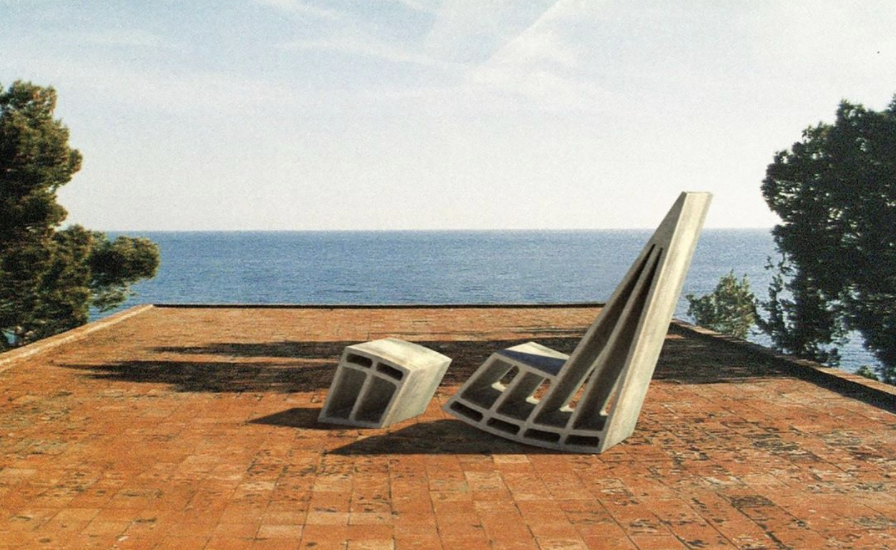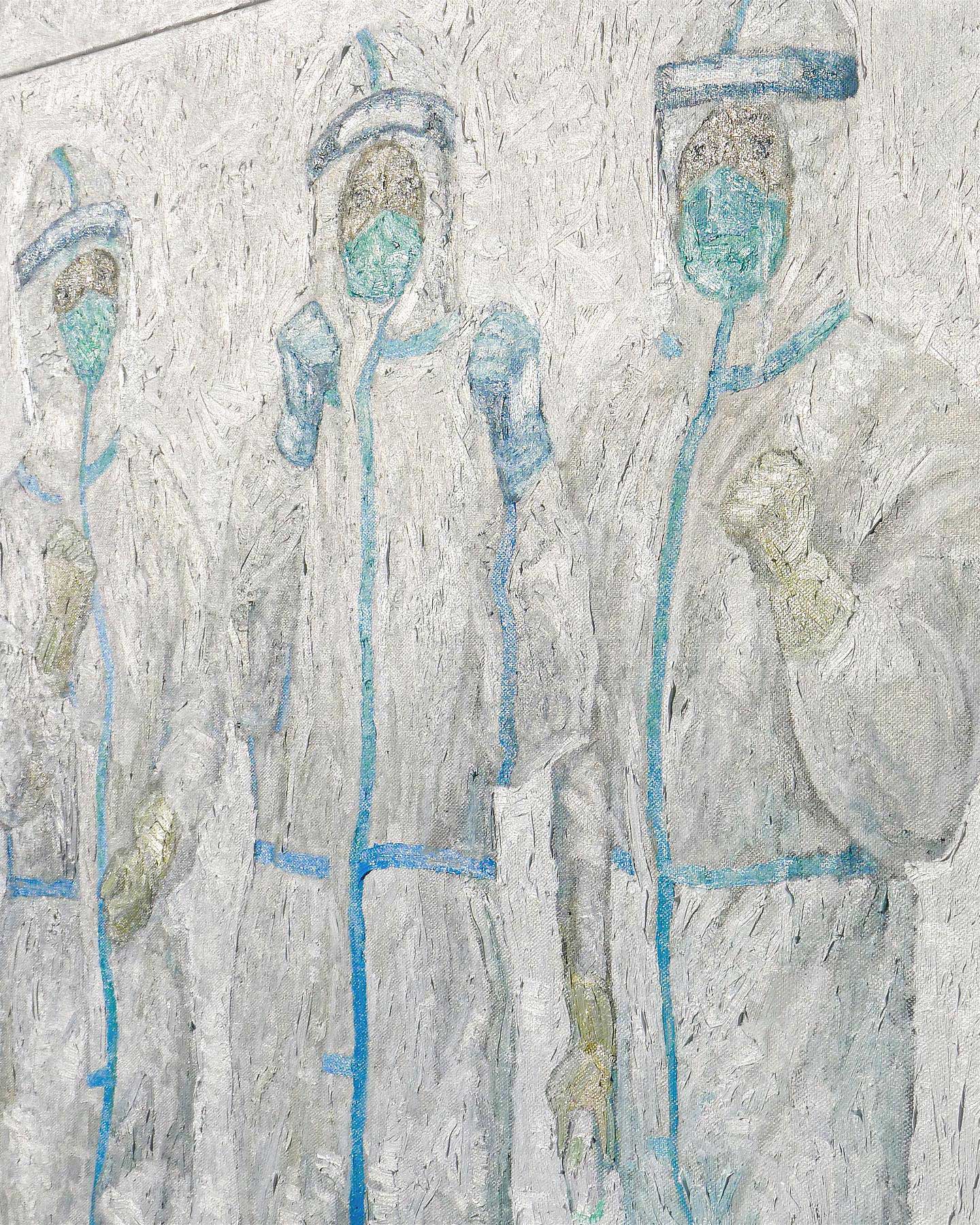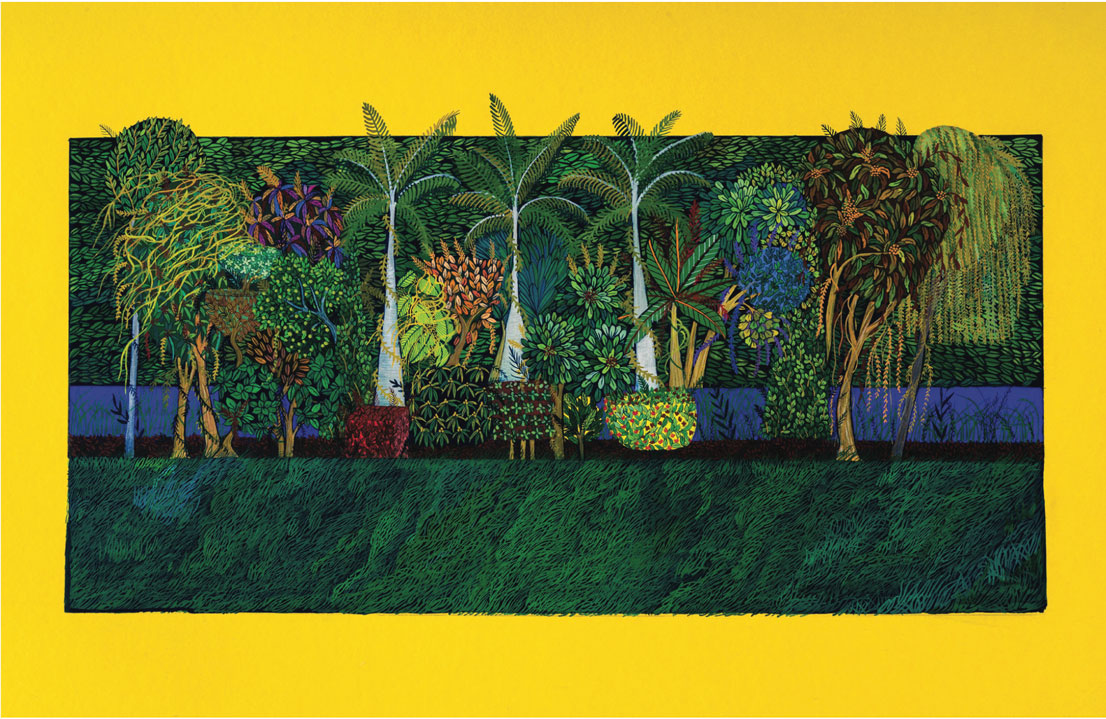For writers often the most challenging aspect of producing their craft is discovering their unique voice/style. For artists or designers, alike, the internal search is also cumulative. Duyi Han, founder, and creative director at Doesn’t Come Out design studio is a young master of absorption in the various worlds of art and design.
“Most designers and artists have their fixed styles, often linked to their time period. However, my art transcends style and time because there are different kinds of beauty,” says Han of his work. His creations span from abstract, sharp, and concrete furniture, to the fresco-covered welkins designed to house the white-wearing saints of our epoch.
Shanghai-raised, Han studied architecture at Cornell University and is currently based between NYC and LA. He describes a clear dream of becoming an architect as he doodled imagined buildings on small pieces of paper as early as kindergarten. Inspiration for his designs stems from historical structures, diverse cultural exposure, and his infinite curiosity towards the ever-expanding universe of art. “I see creating art as living myself. It doesn’t feel like a job.” In this sense, creating is one of Han’s greatest sources of happiness- therapy to the human experience.
While working at Herzog & de Meuron in Switzerland, the idea of fusing architecture, design, and art became all the more necessary. One of the projects assigned to Han was a Danish hospital. He describes this experience as a form of therapy, one which resonates with his most recent work The Saints Wear White.
“I designed interior environments such as ICU rooms and birth rooms. To me, a hospital is a place where people pause thinking about unimportant things and reflect on the essential things of life and death. A well-designed environment in a hospital could positively respond to patients’ emotions and feel very healing and loving. It could give enormous power to people who are in
fear of disease and death. The experience of designing also makes me feel healed.”
In times such as these, this mentality is one many of us are embracing as we’re forced to prioritize what can be easily forgotten amidst our fast-paced lives – loved ones and good health. Han admits feeling great anxiety and fear for his grandparents who are residents of Wuhan, the city of the current COVID-19 pandemic’s origin. Just this week the city has ended its 11-week lockdown, giving us all a gleam of hope. But earlier this year the circumstances in China were frightening for all we had yet to know about the novel virus. During this time Han created The Saints Wear White to commemorate the efforts of hospital workers, a current we are all wading through now as we praise our essential workers from afar. Despite the distance, many of us are experiencing the union of the human spirit, one carried in the essence of The Saints Wear White which has received accolades from all over the globe. Citizens of countries even typically at odds with Chinese governance have shared, posted and reveled in Han’s work, something very touching for the artist- a true symbol of human solidarity.
“I saw an Iranian dentist reposting my pictures on his own Instagram where he only posts pictures of teeth. I feel touched and glad that people from countries that are usually hostile to each other are able to share common emotions looking at my work.”
Many of Han’s works are currently being sold with proceeds going towards vaccine research.
http://doesnt-come-out.com/doesnt-come-out.html
Text by Romina Bertetti and Duyi Han.
All Images by Duyi Han.
Curated by Romina Bertetti.












